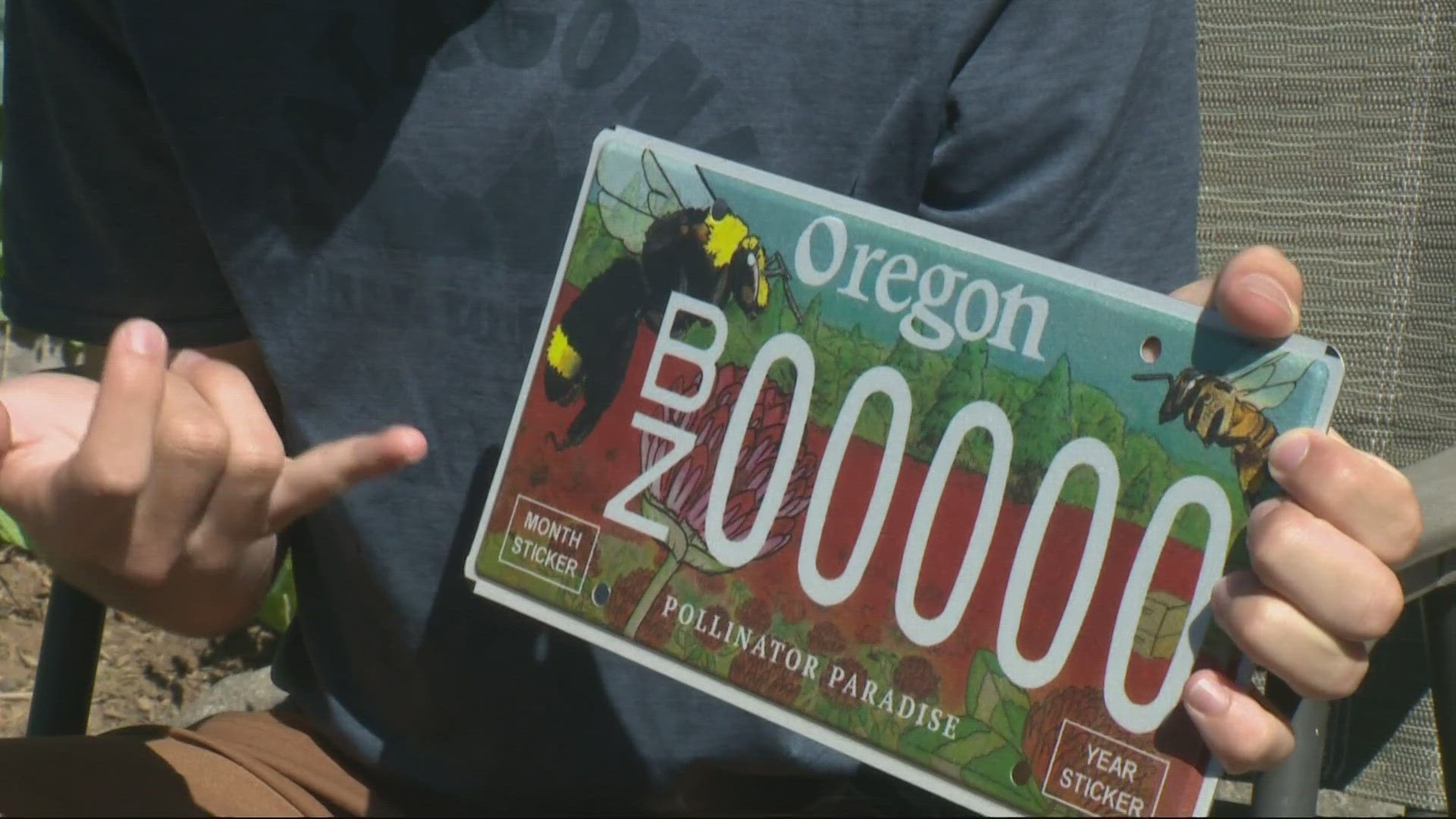ESTACADA, Ore. —
Marek Stanton has always been interested in animals and nature.
The 16-year-old took a keen interest in bees after seeing a documentary on ants in 7th grade. From there, he took what he called a “deep dive” into the fuzzy pollinators.
“I would read a book. find the person who wrote the book or someone else mentioned in it and then I would email them my questions about,” said Stanton, who is also a talented artist. “There's only so many books, so I quickly very quickly exhausted all the books in my library.”
Combining his love of bees with his artistic abilities was a natural fit, and recently resulted in his design being chosen as the template for Oregon’s newest license plate, which pays tribute to bees and the role they play both in natural ecosystems and in agriculture.
But the series of events that led to the license plate — which features a European honeybee and a yellow-faced bumblebee flying over a field of red clover — required a little bit of serendipity.
As Stanton was looking to expand his bee knowledge, he came upon the Oregon Bee Atlas, a program run out of Oregon State University that trains volunteers to identify and collect some of the 870 bee species that live in Oregon.
Early in the pandemic, Staton was attending a virtual training led by Oregon State pollinator health extension specialist Andony Melathopoulos, who was caught a little off guard by the teenager’s questions.
“I met him on Zoom during the pandemic and his camera was off — I could have sworn by the sophistication of his questions that he must have been 65 or 70,” Melathopoulos said, adding that he was taken aback when Stanton revealed he was only 14 at the time.
“Unbelievable!” Melathopoulos said. “Like, how is that possible?”
After the training, Stanton did what he always does: he sent a custom thank you note featuring some of his artwork. But he didn’t stop there.
“He would send watercolors of work that he was doing, and he sent me a graphic novel of a very wonderful wild bee and its life history,” Melathopoulos said. “I mean his capacity as both an artist as a natural historian, as a person, just knows about the world is remarkable. As one of my colleagues says, he kind of represents the best of all of us.”
As Melathopoulos and his colleagues were thinking about who should create the art for a new license plate featuring bees, Stanton immediately came to mind.
And the teen jumped at the chance to submit a design, but he kept his expectations realistic. He knew he would be competing with professional artists and graphic designers.
Still, he set about crafting the design, working at his uncle’s dinner table while on a family trip.
And then he got the call telling him his art had been chosen.
“It was very exciting,” he said, “and surprising as well.”
Getting his artwork onto a license plate was never the point of Stanton’s endeavors, though. He does lots of outreach work, helping educate people about how to protect pollinators in their own yards.
“It's important that people are at least aware of these issues,” he said, noting that he hopes his work doesn’t end with awareness. “We can know all about the bees and what's important, but if we have no action it's not going to be of much use.”
And protecting bees — by planting pollinator-friendly plants and cutting back, or eliminating, the use of pesticides — is important for a host of reasons. Bees are an integral aspect of some of Oregon’s most lucrative agricultural products, from alfalfa and carrots to sweet cherries and Hermiston’s famous watermelons.
So, Melathopoulos said, when we take care of bees, they take care of us.
“Not only are our bees important for agricultural production, but you think of flowers like meadowfoam, you think of our orchard crops, you think of clover seed, they feed the bees as well,” he said. “So it's this really great relationship and that's why Oregon is a pollinator paradise.”
The license plates will be available through the DMV starting in November and will cost $40 per plate, but $35 of that will go toward supporting pollinator research.
Melathopoulos is eagerly awaiting the day when he can ride down the highway and easily spot his fellow bee enthusiasts.
“I can imagine we'll all give each other a wink when we go down the I-5,” he said. “And we’ll be able to think ‘You're one of us.’”

